Staring down a bulldozer and the Texas sun, a lean and lanky man in a conical straw hat prepares to plunge his shovel into the baking Blackland Prairie dirt. His mission? To save the seemingly simple plant at his feet, an Astragalus crassicarpus, commonly known as the ground plum.
Before his foot hits the shovel, a tiny black bee, native to the region, slips into the lavender pea-like blossom of the low-growing ground cover. This act, a native insect pollinating a native plant, is what drives the work of Randy Johnson—the namesake behind Randy Johnson Organics, a native plant nursery and consulting business located outside of Dallas, Texas.
Johnson has made it his mission to rescue as many native plants as possible from the remnants of Blackland Prairie that are slated to succumb to the endless appetite of urban sprawl. Enveloped in the seeds of these plants are their invaluable genetics, which are essential to the foundation of the local ecosystem.
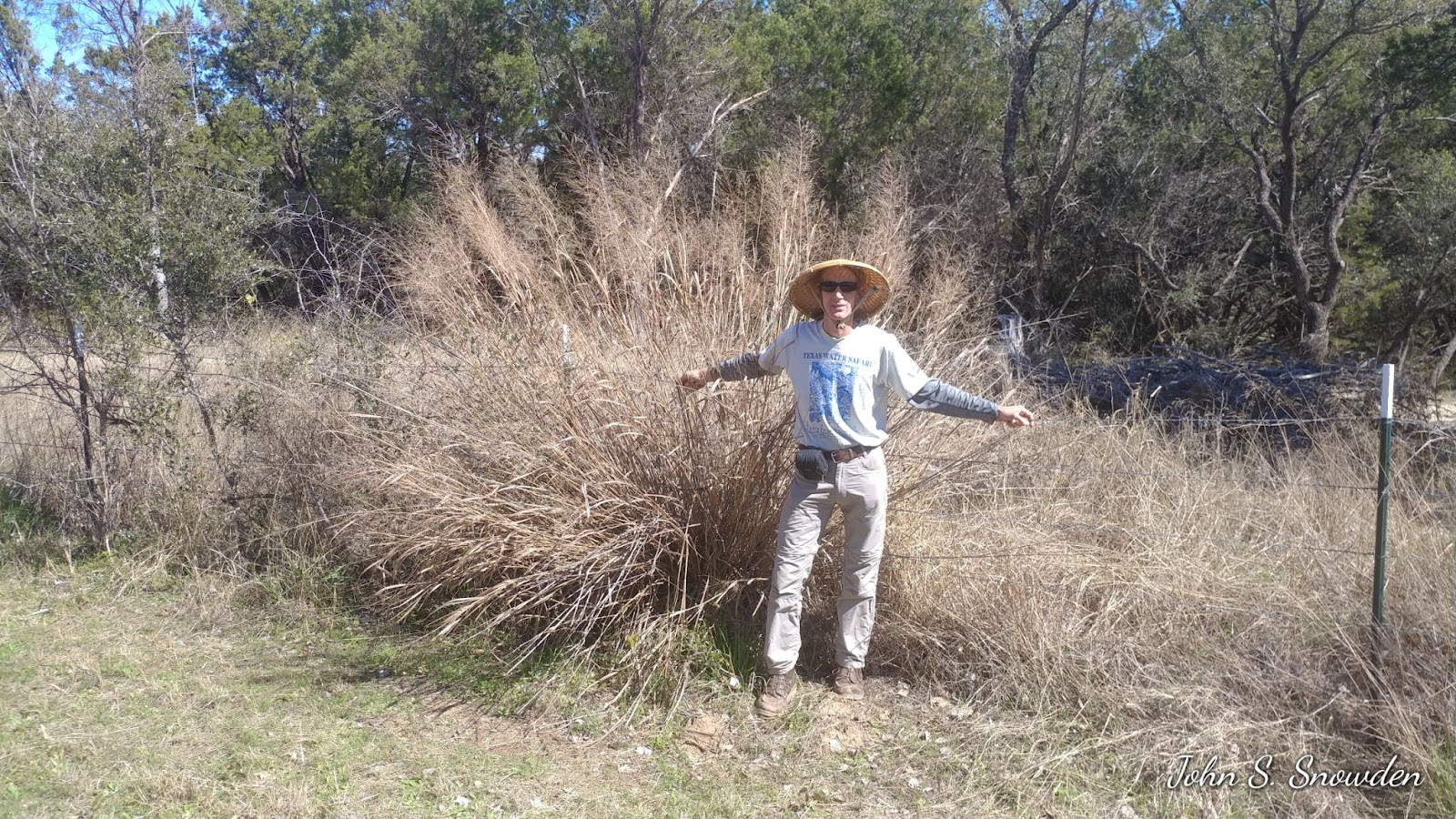
Randy Johnson stands in front of Fossil Rim Switchgrass. Photo courtesy of Randy Johnson
A Perspective Blooms
While Johnson’s interest in the natural world has been long standing, plants weren’t initially his primary interest. In the 1980s, he attended Texas A&M and was majoring in wildlife biology. It was during this time that the plight of the northern spotted owl came into the national spotlight.
Remaining old growth forests in the Pacific Northwest were facing logging threats. These very forests are the primary habitat for northern spotted owls. This not only got Johnson’s attention, it set him thinking.
With the recent success of the captive breeding program and re-release of California Condors, he saw it demonstrated that it was possible for human intervention to support an at risk population however, in the case of the owl he wondered what good these measures would do if there was no habitat for the owls to return to? Additionally, the human support required seemed prohibitive. These realizations turned his focus towards habitat preservation.
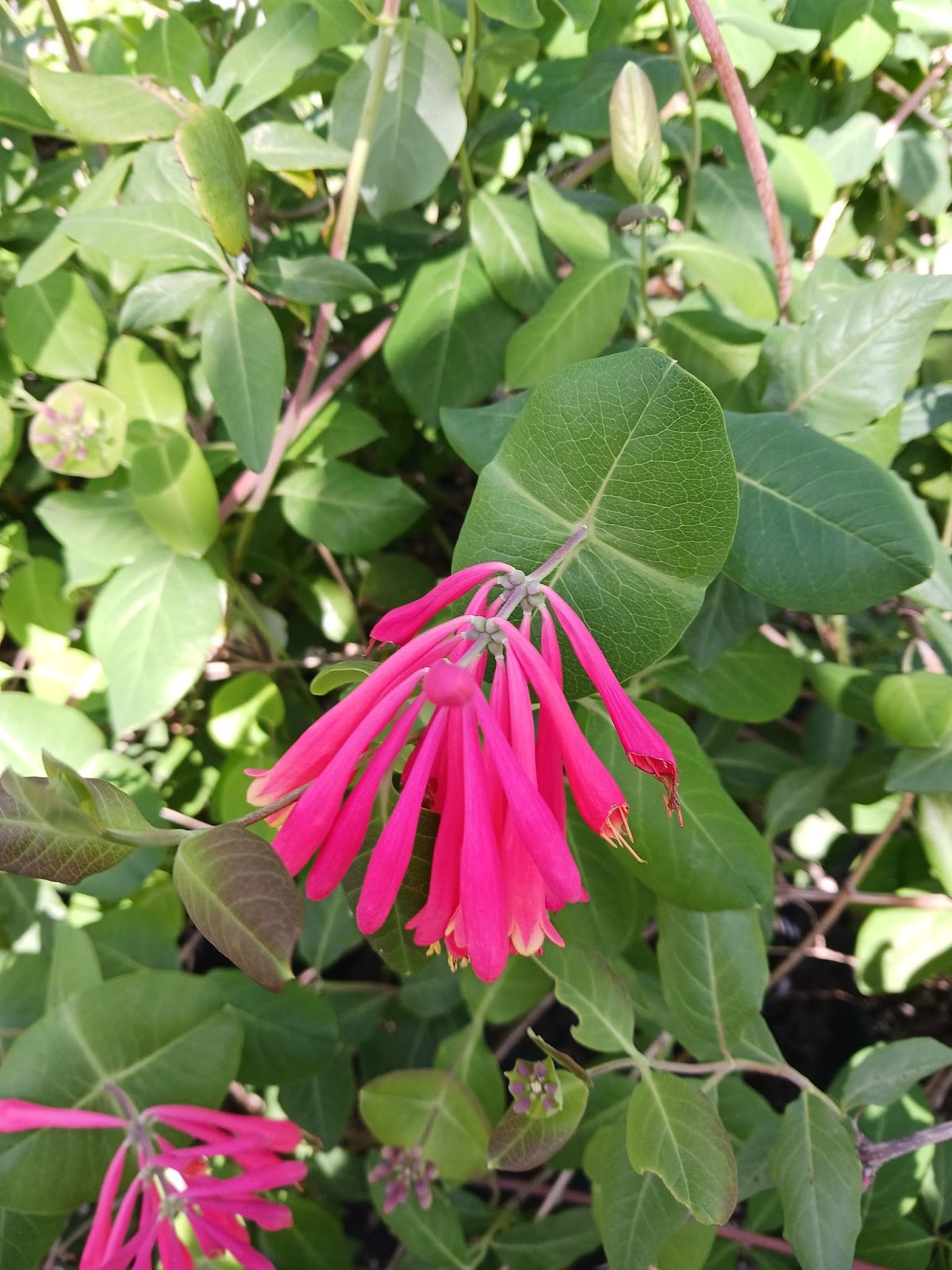
Coral honeysuckle, hummingbird attractant. Photo courtesy of Randy Johnson
Following a season of drifting after his graduation from A&M, Johnson landed the role of Director of Horticulture for the Texas Discovery Gardens, an 8-acre botanical garden east of downtown Dallas. During his tenure there, Johnson’s interest in native plants continued to increase. “As I got more into it, I understood how profound the use of native plants was in the environmental field,” he said.
What helped to drive this home was a group of plants in the gardens’ greenhouse entitled The Benny J. Simpson native plant collection. Intrigued, and noting that no other plant collection bore a title, Johnson probed the executive director as to its importance. With this, he discovered the revolutionarily forward thinking of the collector of the plant specimens.
Simpson had made his career for more than 40 years with the Texas A&M research and extension program. During the 1970s, he knew that water was going to be a threat that loomed over Dallas and other Texas cities. This led him to take a keen eye to the drought tolerant plants that evolved locally, in the heavy, black clay soils around Dallas which shrink and swell to extremes with moisture fluctuation.
Ultimately, this expertise characterizes Simpson’s legacy. Throughout his career he hunted plants statewide, gathering and studying seeds and plants from all 11 ecoregions of Texas. This work continues to inform and inspire, and it certainly made a lasting impression on Johnson.
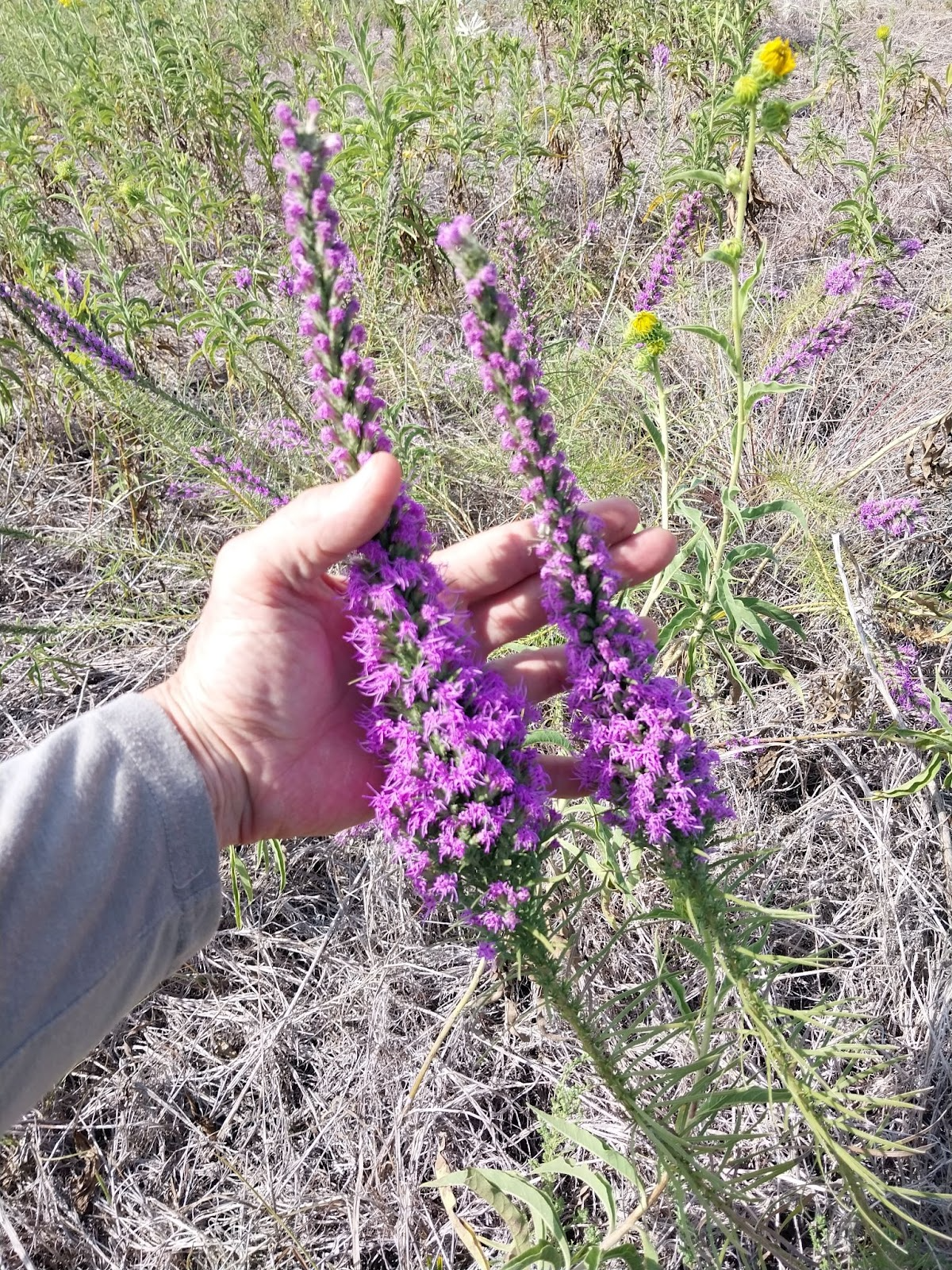
Liatris mucronata in full bloom. Photo courtesy of Randy Johnson
What crystallized Johnson’s increasing proclivity toward native plants were conversations with an entomologist at the Discovery Gardens who was helping to shape butterfly habitat within the conservatory. The ah-ha moment came during a conversation about host plants for butterflies. These are the plants that females lay their eggs on, that provide food for the larvae when they hatch.
"Here's where the coevolution between insects and leaf chemistry comes into play. You’ve got to have certain plants–it's got to be plants with which our insects coevolved," he said.
“So that changed my mindset altogether and made me think harder about what I was doing and my approach to things. That was a critical step for me."
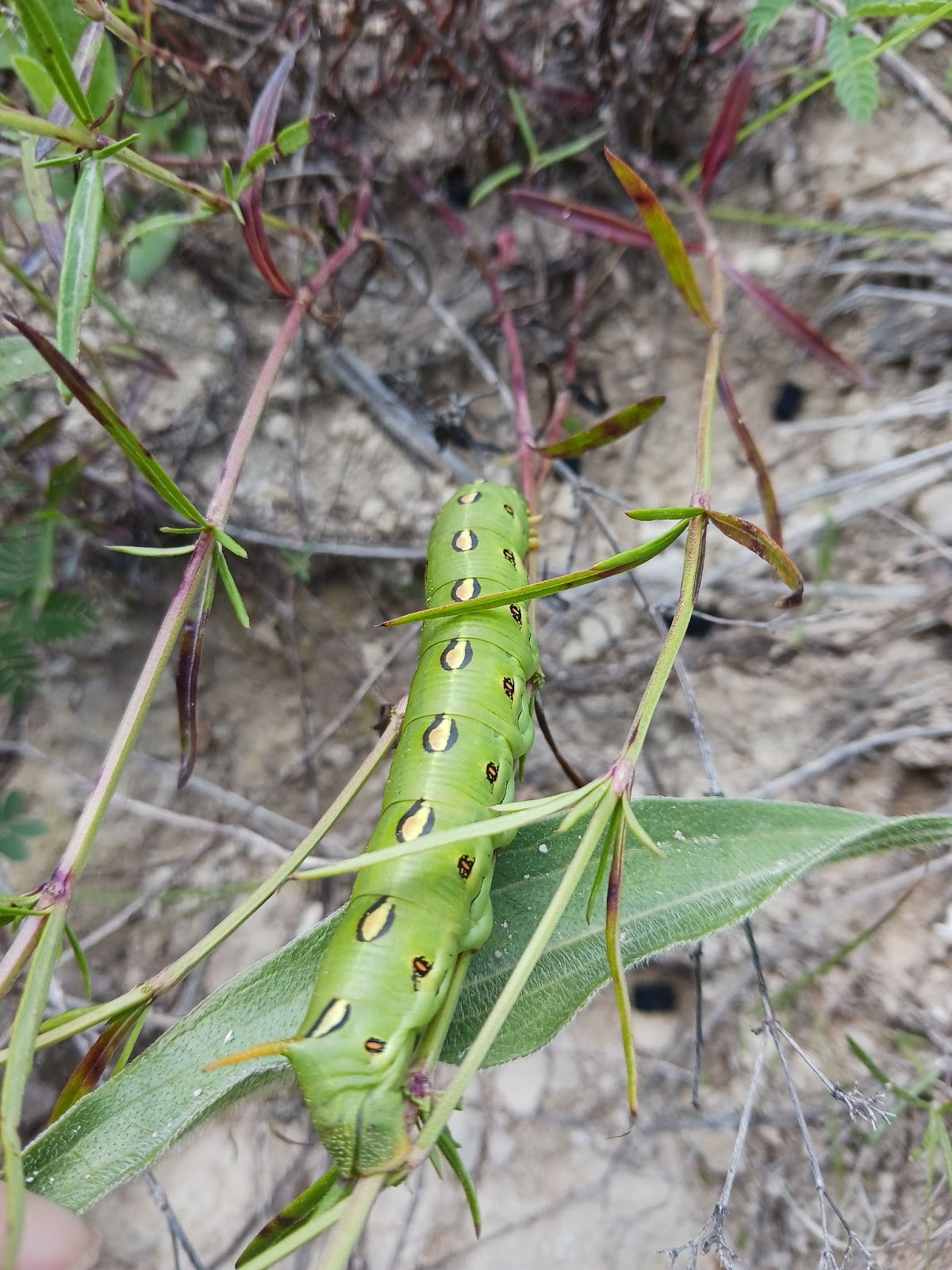
Native sphinx moth caterpillar hosting on pink evening primrose. Photo courtesy of Randy Johnson
It didn’t take him long to piece together the rest of the story that cascades from these plant-insect relationships: the relationship between insects, primarily pollinators, and angiosperms maintains nearly all terrestrial ecosystems on Earth.
Angiosperms are seed-bearing, flowering plants. They are the largest and most diverse group within the plant kingdom and comprise approximately 80 percent of known green plants.
Without the symbiotic relationship between plants and pollinators, specifically ones that have coevolved in a given ecoregion, the delicate balance of life on Earth becomes tenuous. While this concept is theoretically common knowledge out of an elementary lesson on the food web, it seems to be another fact briefly memorized and long forgotten, given the ravenous rate of land development and lack of importance placed on the ecological function of landscapes.
“You know, most of the time when humans watch nature shows, it's like we're at a movie, not in the movie ... but we are actually in the movie. This movie is called the World, the Earth and Nature. You know, we're so arrogant—we don't think that our existence could be tied to something as insignificant as a relationship between an insect and a flower,” Johnson said.
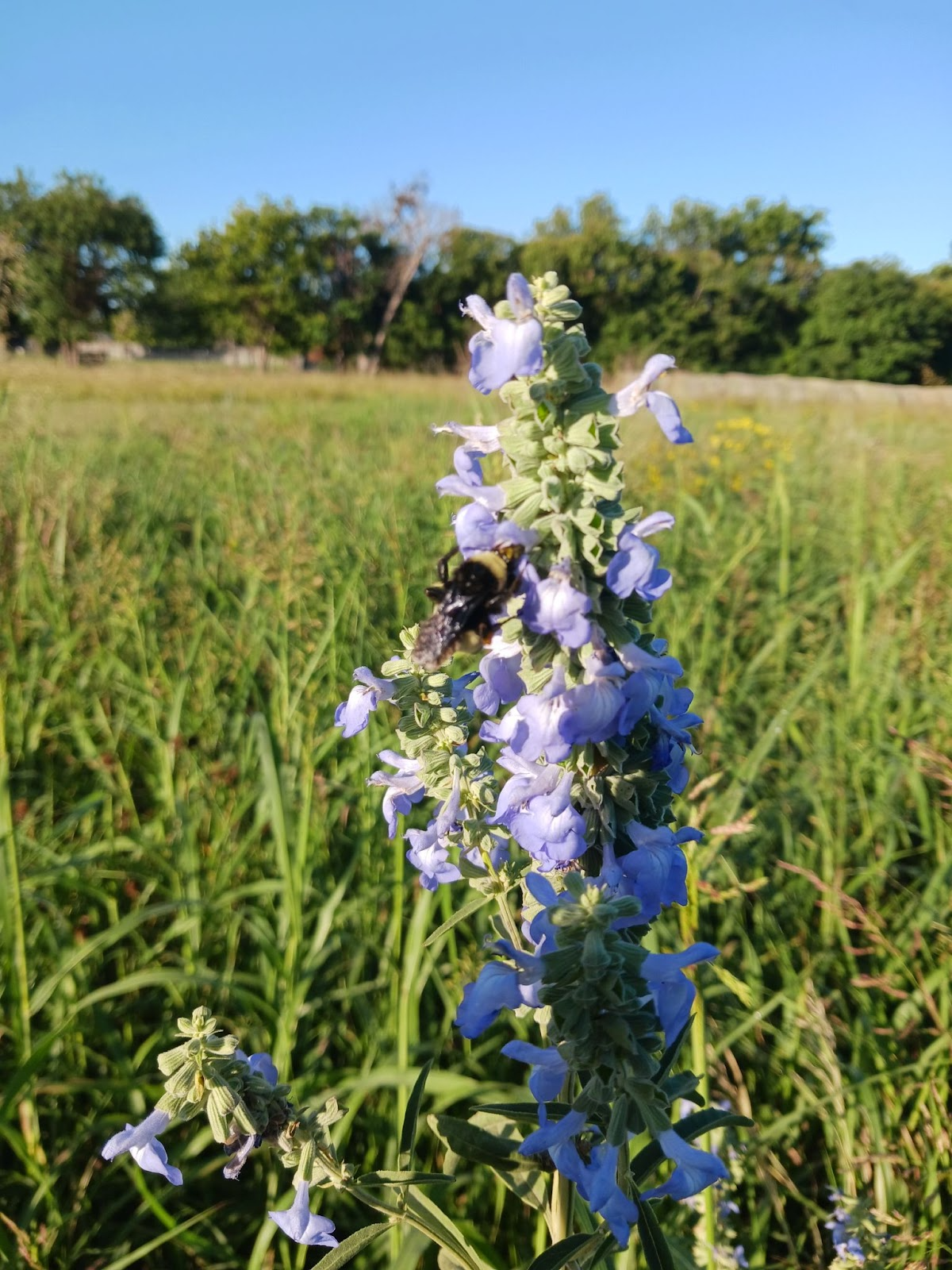
Bumblebee, Bombus spp., on blue prairie sage | Photo courtesy of Randy Johnson
A Mission is Born
This new knowledge struck him like a lightning bolt.
“When I started learning all this stuff, it was like wow, I have no option,” Johnson said. “There's no other reason to study any other kind of plant. I mean, the ornamental stuff that's not native here, it's taking up space that a native plant could be occupying,”
From that moment on, Johnson has been dedicating himself to the rescue and proliferation of native plants in his local area. While he’s passionate about Texas Blackland Prairie plants, he believes that people should be attuned to and utilizing the natives of their own area, wherever that may be.
By happenstance, he stumbled into consulting while still working at the Discovery Gardens. A colleague asked for his opinion on a design she'd commissioned that was characterized by natives. He found the proposed plan, which came with a premium price tag, lacking in functionality.
He eventually branched out and launched his own nursery, which he operates along with his sister, Julie Johnson. He credits Julie with having an incredibly deft hand for propagation, which at this stage is the focus of her efforts while he rescues plants, does public speaking engagements, and consulting—including with local schools.
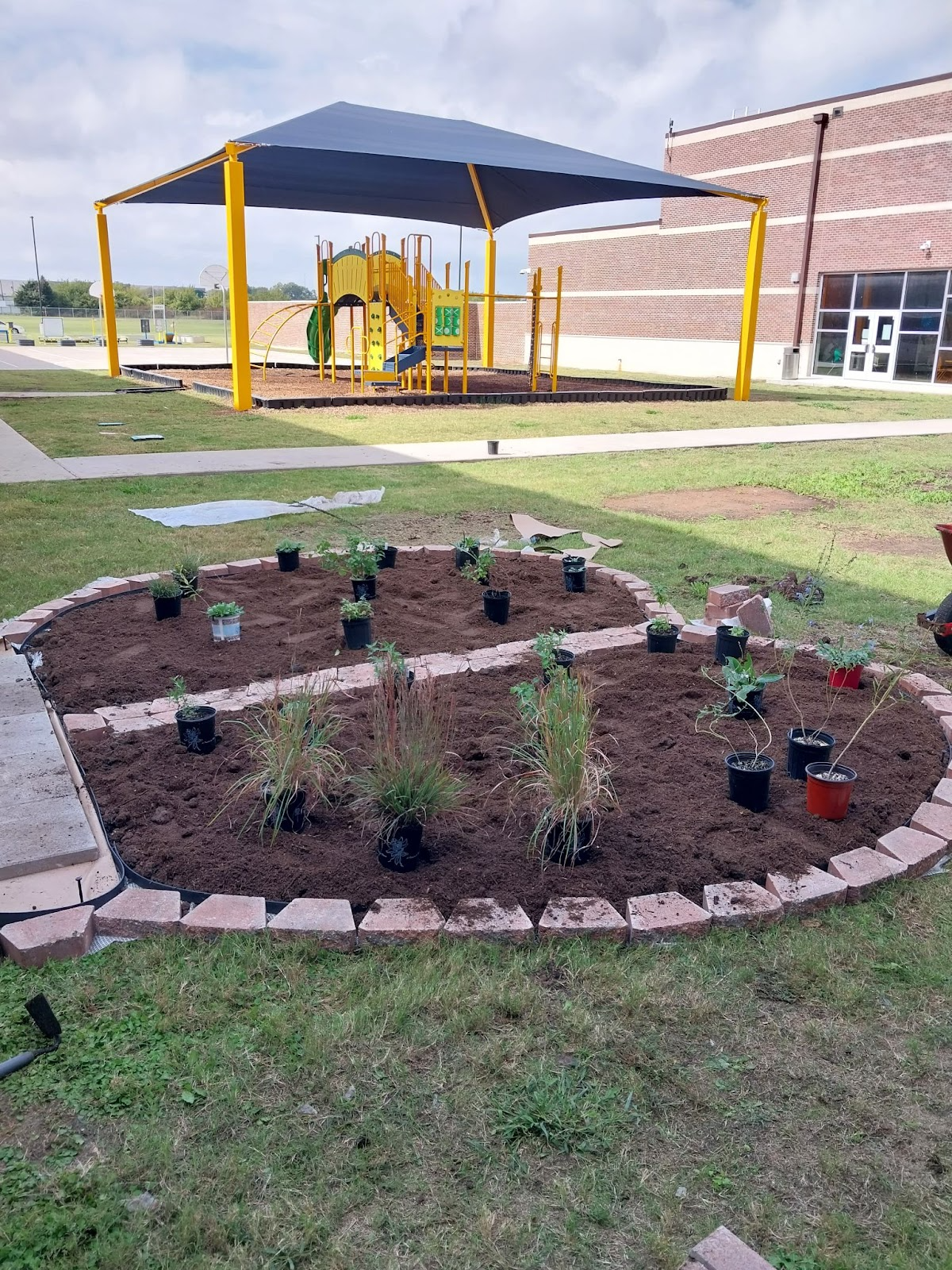
Half of a butterfly-shaped garden co-designed by school students. Photo courtesy of Randy Johnson
Johnson is adamant about what sets their plants apart.
“We grow from seed and seed we collect. It's wild seed from prairie remnants all around North Texas, so our genetics are ancient and local and adapted to our clay soils and our climate," he said.
This approach to native plant propagation is a labor of love. While other nurseries may carry a larger variety of plants that are technically considered native, they often lack the genetics of a plant that’s truly native to the area.
“Most of them come from California—that's California genetics. Maybe the exact same species, but that's a whole different deal. That's why you see a lot of native plant installations fail, especially big ones,” Johnson said.

Prairie beardtongue rescued from development (left). Stiff goldenrod grown from wild collected seed (right). Photo courtesy of Randy Johnson
Another factor that aids in the adaptability of local native plants is soil biology. In the plant specimens that Johnson digs, soil is collected from the rhizosphere, or root zone. This helps to preserve important elements of the root microbiome, like mycorrhizal fungi that have a symbiotic relationship with plant roots.
While this soil isn’t the growing medium for newly propagated plants it is used to inoculate them, which encourages the establishment of a healthy root zone.
While Johnson’s methods are more time intensive than commercial growers producing a commodity crop, he is highly purpose driven. His belief that habitat can and must be created everywhere, especially on the private plots of homeowners, is reinforced by the likes of famed entomologist Dr. Douglas Tallamy.
Tallamy’s most recent book, Nature’s Best Hope, draws the roadmap for a Homegrown National Park. Here he outlines how homeowners can provide essential corridors of native plants for pollinators and wildlife that will bridge the gap between swaths of preserved areas that are often too separated to serve the needs of animal and insect populations—leaving them sequestered and dwindling.
Johnson has repeatedly seen this in practice first hand throughout his decades of experience. A particularly memorable event was while he was staging plants prior to installing them for a client. Before the plants were in the ground, a native dragonfly and a native skipper butterfly were on the plants—the client jokingly chided him, questioning whether Johnson brought the specimens along with him to release on site.
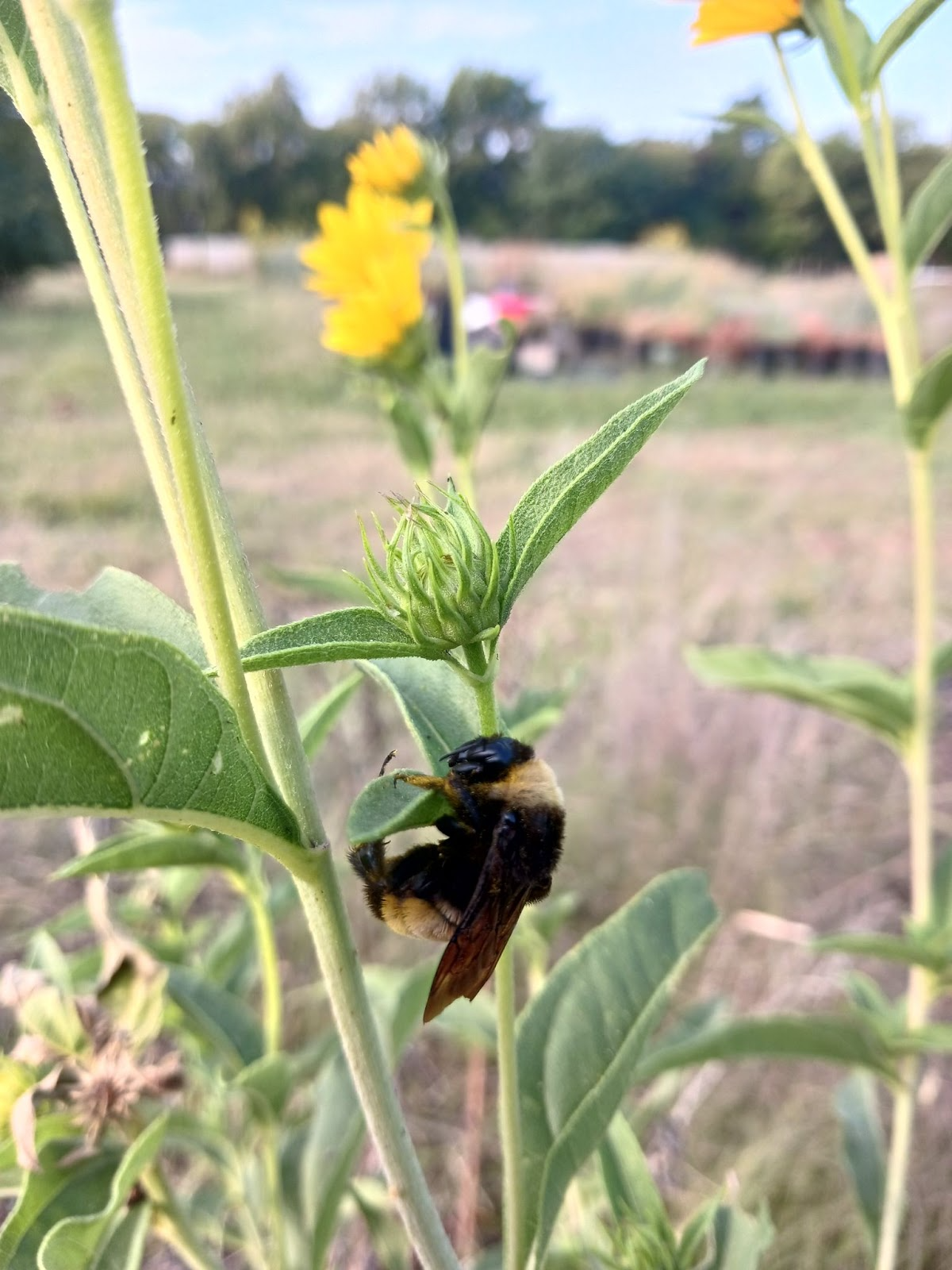
Bumblebee, Bombus spp., on Maximillian sunflower. Photo courtesy of Randy Johnson
With resolve, Johnson said, “It starts with one plant. It can start with as little as one plant. Now the more you get, the more diversity you have and the better your show will be, but with one plant you can start turning it around. You can start making a difference.”
A Bright Horizon
Johnson is currently venturing into a project that will enable him to scale up the nursery and introduce native plants to scores more people–ideally inspiring them to incorporate many natives on their property.
He has partnered with another party who is equally enthusiastic. On a much larger swath of land, the team is set to develop expansive display gardens, a nursery, and to erect a substantial vintage glass greenhouse that Johnson referred to as “a crystal palace.”
While many details of the endeavor are still being refined, the foundation is strong. In addition to flowering native plants, there are broader plans for habitat restoration on the 20-acre property with hundreds of oak and nut trees.
His enthusiasm, which is always actively simmering as he talks about plants and pollinators, boils over when he talks about the opportunity at hand.
In an ideal scenario, the endeavor will produce a template that can be duplicated and eventually expanded outside of Texas, inspiring critical action nationwide.
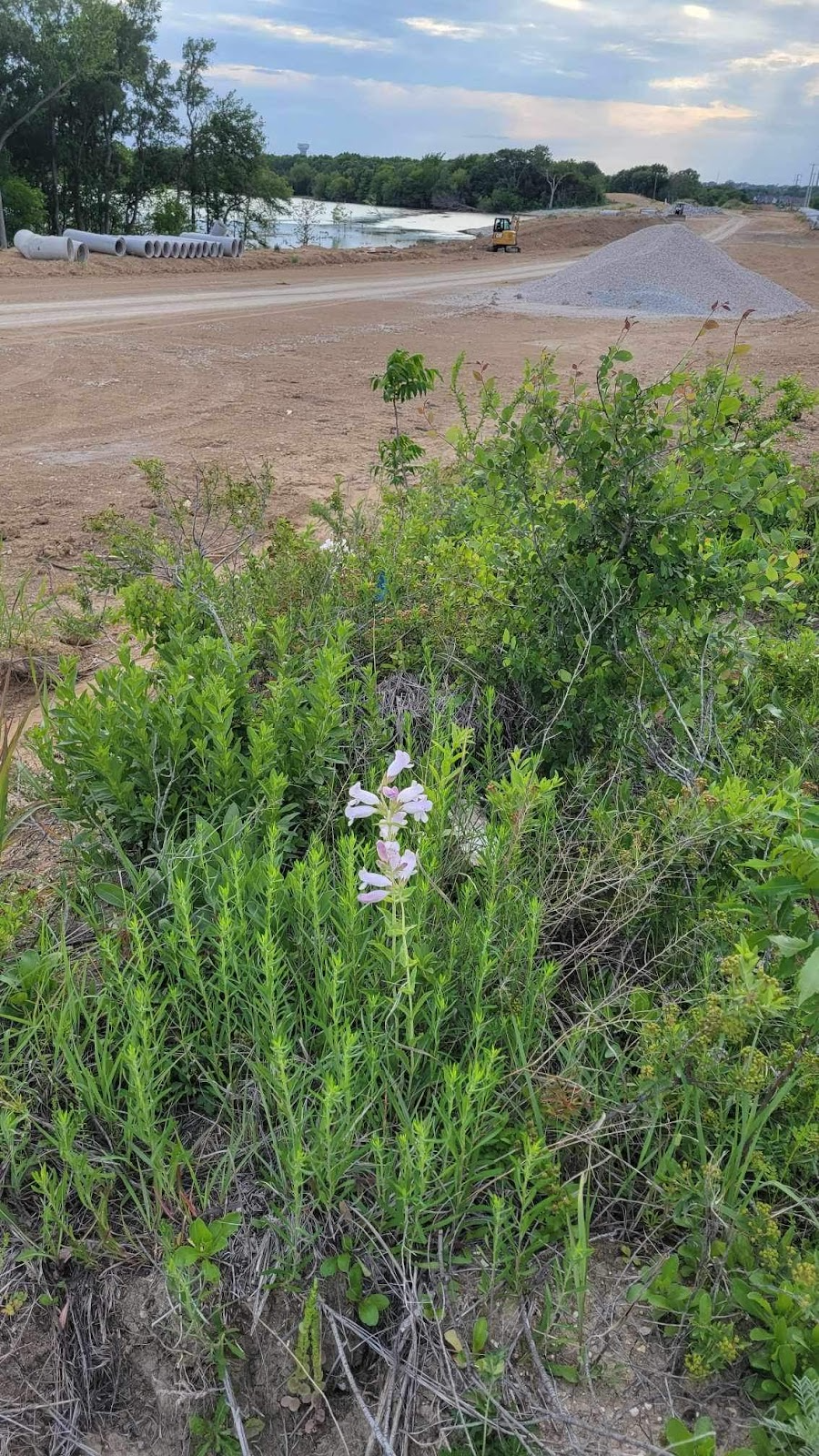
Plants rescued from development. Photo courtesy of Randy Johnson
